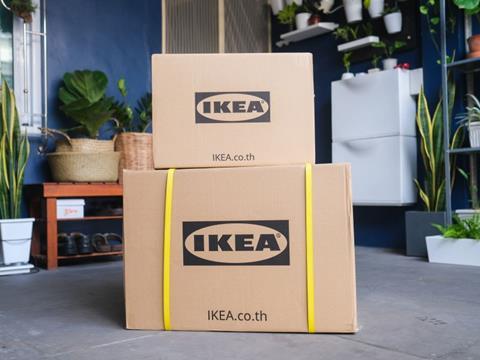
Ahead of the PACE Packaging and Converting Executive Forum in Vienna on March 11th and March 12th, 2020, we catch up with IKEA, who will speak at the event.
Allan Dickner, range engineering leader packaging at the company gives some insights in the packaging challenges the major furniture retailer faces, and how these are addressed.
-How would you summarise the packaging challenges for a company like IKEA? What steps is the company taking to address them?
To summarise the packaging challenges ahead, they could be summarised under different headlines: Urbanisation, globalisation, circularity, automation and digitalisation. All these headlines add to what is expected from the packaging in addition to the traditional expectations we have been working with for many years (protect, efficient handling, inform & inspire etc.).
The way customers meet IKEA is rapidly changing, away from the blue box cash & carry concept towards new ways of interacting with us on the web or visiting city centre stores (smaller IKEA stores with a limited range available). In the packaging system of tomorrow, we have to see services as a vital part of the offer. The customers take for granted that we as a retailer work with sustainable solutions in all dimensions, it’s key to trust the IKEA brand.
-Are there trade-offs between sustainability and functionality?
Our general approach is that we always use the most cost efficient and sustainable packaging solution, without jeopardising functionality. The best example is most probably that IKEA started with the brown flat packs back in 1956.
-How does IKEA make sure its packs are efficient, sustainable and consumer friendly?
It already starts in the product development, where we always see the packaging design integrated in the product design process. As an overall guiding principle we talk about the democratic design principles where five main aspects have to be fulfilled: form, function, sustainability, low cost and quality. You cannot fail in fulfilling any of the criteria.
A common base for our packaging design is that we have specific lists of all approved packaging materials/constructions to be used, which are all investigated and approved from a sustainability aspect. Non-sustainable packaging materials like EPS have been banned since 2015 in flat packs, and all our corrugated cardboard is of FSC origin.
-Could you give us a sneak preview of your talk at PACE – is paper actually better than plastics?
During the last ten years, we have reduced the share of plastic packaging material from 12% to 7%, of total amount of packing material which is the equivalence of a saving of 60.000 tons a year. If we continue to work the same way as today by replacing the plastic packaging material with more sustainable sources, preferable fibre based materials, it will help us decrease the amount of plastic packaging material to around 3% by 2030.
Asked whether the event would be affected by the current Coronavirus situation, the organisers were keen to reassure attendees that PACE was going ahead as planned. “Our events are largely regionalised and thus unaffected by the Coronavirus,” a spokesperson said.











